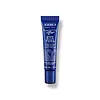What's inside
What's inside
 Key Ingredients
Key Ingredients

 Benefits
Benefits

 Concerns
Concerns

 Ingredients Side-by-side
Ingredients Side-by-side

Water
Skin ConditioningHelianthus Annuus Seed Oil
EmollientSimmondsia Chinensis Seed Oil
EmollientPrunus Armeniaca Kernel Oil
MaskingSqualane
EmollientAlcohol Denat.
AntimicrobialCetearyl Alcohol
EmollientGlyceryl Stearate
EmollientStearyl Alcohol
EmollientCetearyl Glucoside
EmulsifyingOenothera Biennis Oil
EmollientButyrospermum Parkii Butter
Skin ConditioningPhenoxyethanol
PreservativeLithium Magnesium Sodium Silicate
AbsorbentChlorphenesin
AntimicrobialXanthan Gum
EmulsifyingRuscus Aculeatus Root Extract
AstringentAloe Barbadensis Leaf Juice Powder
Skin ConditioningTocopherol
AntioxidantLavandula Angustifolia Oil
MaskingAdenosine
Skin ConditioningLinalool
PerfumingRosmarinus Officinalis Leaf Oil
MaskingPelargonium Graveolens Flower Oil
MaskingGlycine Soja Oil
EmollientCitronellol
PerfumingGeraniol
PerfumingLavandula Hybrida Oil
EmollientCucumis Sativus Fruit Extract
EmollientLimonene
PerfumingCitral
PerfumingCurcuma Longa Root Extract
MaskingSclareolide
MaskingRose Flower Oil
MaskingJasminum Officinale Extract
MaskingCitric Acid
BufferingWater, Helianthus Annuus Seed Oil, Simmondsia Chinensis Seed Oil, Prunus Armeniaca Kernel Oil, Squalane, Alcohol Denat., Cetearyl Alcohol, Glyceryl Stearate, Stearyl Alcohol, Cetearyl Glucoside, Oenothera Biennis Oil, Butyrospermum Parkii Butter, Phenoxyethanol, Lithium Magnesium Sodium Silicate, Chlorphenesin, Xanthan Gum, Ruscus Aculeatus Root Extract, Aloe Barbadensis Leaf Juice Powder, Tocopherol, Lavandula Angustifolia Oil, Adenosine, Linalool, Rosmarinus Officinalis Leaf Oil, Pelargonium Graveolens Flower Oil, Glycine Soja Oil, Citronellol, Geraniol, Lavandula Hybrida Oil, Cucumis Sativus Fruit Extract, Limonene, Citral, Curcuma Longa Root Extract, Sclareolide, Rose Flower Oil, Jasminum Officinale Extract, Citric Acid
Water
Skin ConditioningDimethicone
EmollientGlycerin
HumectantNiacinamide
SmoothingMethyl Methacrylate Crosspolymer
Caffeine
Skin ConditioningEthylhexyl Palmitate
EmollientDimethicone/Vinyl Dimethicone Crosspolymer
Skin ConditioningDimethicone/PEG-10/15 Crosspolymer
PEG-10 Dimethicone
Skin ConditioningHydroxyethylpiperazine Ethane Sulfonic Acid
BufferingSodium Chloride
MaskingPerlite
AbsorbentPhenoxyethanol
PreservativeChlorphenesin
AntimicrobialSodium Citrate
BufferingP-Anisic Acid
MaskingTocopherol
AntioxidantDisodium EDTA
Ascorbyl Glucoside
AntioxidantAdenosine
Skin ConditioningGlycine Soja Protein
EmulsifyingDipropylene Glycol
HumectantCaprylyl Glycol
EmollientSodium Cocoyl Glutamate
CleansingChlorhexidine Digluconate
AntimicrobialN-Hydroxysuccinimide
Skin ConditioningPotassium Sorbate
PreservativeEthylhexylglycerin
Skin ConditioningSodium Benzoate
MaskingPalmitoyl Oligopeptide
CleansingChrysin
Skin ConditioningPalmitoyl Tetrapeptide-7
Skin ConditioningWater, Dimethicone, Glycerin, Niacinamide, Methyl Methacrylate Crosspolymer, Caffeine, Ethylhexyl Palmitate, Dimethicone/Vinyl Dimethicone Crosspolymer, Dimethicone/PEG-10/15 Crosspolymer, PEG-10 Dimethicone, Hydroxyethylpiperazine Ethane Sulfonic Acid, Sodium Chloride, Perlite, Phenoxyethanol, Chlorphenesin, Sodium Citrate, P-Anisic Acid, Tocopherol, Disodium EDTA, Ascorbyl Glucoside, Adenosine, Glycine Soja Protein, Dipropylene Glycol, Caprylyl Glycol, Sodium Cocoyl Glutamate, Chlorhexidine Digluconate, N-Hydroxysuccinimide, Potassium Sorbate, Ethylhexylglycerin, Sodium Benzoate, Palmitoyl Oligopeptide, Chrysin, Palmitoyl Tetrapeptide-7
Ingredients Explained
These ingredients are found in both products.
Ingredients higher up in an ingredient list are typically present in a larger amount.
Adenosine is in every living organism. It is one of four components in nucleic acids that helps store our DNA.
Adenosine has many benefits when used. These benefits include hydrating the skin, smoothing skin, and reducing wrinkles. Once applied, adenosine increases collagen production. It also helps with improving firmness and tissue repair.
Studies have found adenosine may also help with wound healing.
In skincare products, Adenosine is usually derived from yeast.
Learn more about AdenosineChlorphenesin is a synthetic preservative. It helps protect a product against bacteria in order to extend shelf life. In most cases, Chlorphenesin is paired with other preservatives such as phenoxyethanol and caprylyl glycol.
Chlorphenesin is a biocide. This means it is able to help fight the microorganisms on our skin. It is also able to fight odor-releasing bacteria.
Chlorphenesin is soluble in both water and glycerin.
Studies show Chlorphenesin is easily absorbed by our skin. You should speak with a skincare professional if you have concerns about using Chlorphenesin.
Learn more about ChlorphenesinPhenoxyethanol is a preservative that has germicide, antimicrobial, and aromatic properties. Studies show that phenoxyethanol can prevent microbial growth. By itself, it has a scent that is similar to that of a rose.
It's often used in formulations along with Caprylyl Glycol to preserve the shelf life of products.
Tocopherol (also known as Vitamin E) is a common antioxidant used to help protect the skin from free-radicals and strengthen the skin barrier. It's also fat soluble - this means our skin is great at absorbing it.
Vitamin E also helps keep your natural skin lipids healthy. Your lipid skin barrier naturally consists of lipids, ceramides, and fatty acids. Vitamin E offers extra protection for your skin’s lipid barrier, keeping your skin healthy and nourished.
Another benefit is a bit of UV protection. Vitamin E helps reduce the damage caused by UVB rays. (It should not replace your sunscreen). Combining it with Vitamin C can decrease sunburned cells and hyperpigmentation after UV exposure.
You might have noticed Vitamin E + C often paired together. This is because it is great at stabilizing Vitamin C. Using the two together helps increase the effectiveness of both ingredients.
There are often claims that Vitamin E can reduce/prevent scarring, but these claims haven't been confirmed by scientific research.
Learn more about TocopherolWater. It's the most common cosmetic ingredient of all. You'll usually see it at the top of ingredient lists, meaning that it makes up the largest part of the product.
So why is it so popular? Water most often acts as a solvent - this means that it helps dissolve other ingredients into the formulation.
You'll also recognize water as that liquid we all need to stay alive. If you see this, drink a glass of water. Stay hydrated!
Learn more about Water